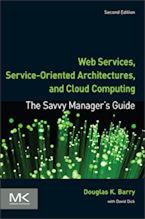Finance XML
eXtensible Business Reporting Language (XBRL): XML specification that describes financial information for public and private companies and other organizations. They have created XML taxonomies. Since financial reporting varies by country, the taxonomies vary by country. See Financial Reporting Taxonomies at the Web XBRL site. The Organization: XBRL International. More information: XBRL page on the the XBRL International website.
Financial Information eXchange (FIX) Protocol: XML specification for the real-time electronic exchange of securities transactions. Organization: FIX Protocol Organization (FPL). More information: FIX page on the the FPL website.
Financial products Markup Language (FpML): XML specification for swaps, derivatives, and structured financial products. Organization: International Swaps and Derivatives Association (ISDA). More information: FpML page on the the FpML.org website.
Interactive Financial Exchange (IFX): XML specification for electronic bill presentment and payment, business to business payments, business to business banking (such as balance and transaction reporting, remittance information), automated teller machine communications, consumer to business payments, and consumer to business banking. Organization: Interactive Financial eXchange Forum (IFX Forum). More information: IFX page on the Nacha website.
Market Data Definition Language (MDDL): XML specification to enable interchange of data necessary to account for, to analyze, and to trade instruments of the world's financial markets. MDDL seeks, through definition of common terms, to provide a standard vocabulary so market data may be exchanged unambiguously between exchanges, vendors, redistributors, and subscribers. MDDL is designed to facilitate delivery of all data and to increase ease of processing for recipients of this market based financial data. Organization: Software & Information Industry Association (SIIA). More information: MDDL page on the MDDL.org website.
Open Financial Exchange (OFX) XML Schema: XML specification for the electronic exchange of financial data between financial institutions, businesses and consumers via the Internet. It is designed to support a wide range of financial activities including consumer and small business banking; consumer and small business bill payment and investments transaction download, including stocks, bonds, and mutual funds. Organization: Open Financial Exchange (OFX) Consortium. More information: OFX website.
Research Information eXchange Markup Language (RIXML): XML specification to tag any piece of research content, in any form or media with enough detail for end users to be able to quickly search, sort and filter aggregated research. Organization: Research Information eXchange Markup Language (RIXML).org. More information: RIXML page on RIXML.org website.
SWIFTStandards: SWIFTStandards develops business standards to support transactions in the financial markets for payments, securities, treasury and trade services. Their proprietary MT messages are complemented by new XML-based (MX) messages, which enable the transfer of richer data for more complex business transactions. Organization: SWIFT. More information: Standards page on SWIFT website.
Context for Finance XML
Related Articles for Finance XML
- Accounting XML
- Advertising XML
- Astronomy XML
- Building XML
- Chemistry XML
- Construction XML
- Education XML
- Food XML
- Government XML
- Healthcare XML
- Human Resources XML
- Instruments XML
- Insurance XML
- Legal XML
- Manufacturing XML
- News XML
- Oil and Gas XML
- Photo XML
- Physics XML
- Publishing XML
- Real Estate XML
- Telecommunications XML
- Travel XML
Author
Douglas K Barry
Principal
You may use this material for your work or classes. Reprint Policy. Be sure to check the menu at the left for other articles available on this site.
The Savvy Manager's Guide
Douglas K Barry is also the author of a book that explains Web Services, service-oriented architecture, and Cloud Computing in an easy-to-understand, non-technical manner.
Web Services, Service-Oriented Architectures, and Cloud Computing: The Savvy Manager's Guide (Second Edition)
by Douglas K Barry with David Dick
This is a guide for the savvy manager who wants to capitalize on the wave of change that is occurring with Web Services, service-oriented architecture, and—more recently—Cloud Computing. The changes wrought by these technologies will require both a basic grasp of the technologies and an effective way to deal with how these changes will affect the people who build and use the systems in our organizations. This book covers both issues. Managers at all levels of all organizations must be aware of both the changes that we are now seeing and ways to deal with issues created by those changes.

